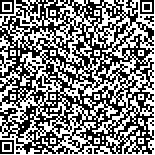|
| 引用本文: | 张效嘉,线薇微.1985~1986年长江口生态系统能流网络分析[J].海洋科学,2016,40(7):60-72. |
| |
|
| |
|
|
| 本文已被:浏览 1616次 下载 1364次 |

码上扫一扫! |
|
|
| 1985~1986年长江口生态系统能流网络分析 |
|
张效嘉1,2, 线薇微1,3
|
|
1.中国科学院 海洋研究所;2.中国科学院大学;3.青岛海洋科学与技术国家实验室 海洋生态与环境科学功能实验室
|
|
| 摘要: |
| 为构建1985~1986年长江口生态系统的Ecopath模型, 作者根据1985~1986年全年12个航次长江口及邻近海域综合调查数据, 分析此历史时期长江口及邻近海域生态系统的能流结构, 并对生态系统总体特征进行了综合评估。1985~1986年长江口水域生态系统包括16个功能群, 各功能群的营养级在1~4.52, 中上层游泳生物食性鱼类占据最高营养级。各功能群间关系主要由3种途径导致: 控制类型、生态位重叠和营养级联。营养级聚合分析表明, 1985~1986年长江口生态系统能流中牧食食物链占据主导地位, 直接来自初级生产者的占比57%。此历史时期长江口生态系统各营养级平均转化效率为12.4%, 其中来自碎屑的能流转换效率为12.9%, 来自初级生产者的转换效率为12%。生态系统总体特征分析显示, 该历史时期连接指数和系统杂食指数分别为0.471和0.103, 长江口及邻近海域循环指数和平均路径长度分别为9.35%和2.778, 总初级生产量/总呼吸量为1.724。 |
| 关键词: 长江口 能量流动 网络分析 生态通道模型 |
| DOI:10.1759//hykx20141224002 |
| 分类号: |
| 基金项目:国家自然科学基金面上资助项目(41176138 号和 31272663号); 国家基金委-山东省联合基金资助项目( U1406403); 国务院三峡工程建设委员会项目(JJ 2012-2013 号) |
|
| Energy flow and network analysis of the Yangtze Estuary ecosystem during 1985–1986 |
|
ZHANG Xiao-jia,XIAN Wei-wei
|
| Abstract: |
| The term ‘energy flow’ expresses the substantial relationship between organisms and their connection with the environment. It reflects the productivity level, structure, and function of a particular ecosystem. In this research, based on a comprehensive marine survey conducted during 1985-1986, we developed a mass-balance model for Yangtze Estuary to analyze the energy flow of this ecosystem. Using the Ecopath model, we evaluated the overall characteristics of the Yangtze Estuary and adjacent waters ecosystem. Ecosystem organisms were divided into sixteen functional groups. The Pedigree Index of the Ecopath model was 0.685, indicating that the quality of the model data was acceptable. Sensitivity analysis showed that changes in input parameters may influence the output parameters more significantly in some functional groups than in others. The Ecopath model suggested that during 1985-1986 the trophic level of functional groups ranged from 1 to 4.52, with pelagic nekton-feeding fish occupying the highest trophic level. The trophic level of macroinvertebrates, including shrimps, crabs, and cephalopods was approximately 3. Mixed trophic impact analysis suggested a direct or indirect relationship between functional groups, including the direction and degree of its influence. The impact was mainly caused by control type, niche overlap, and trophic cascades. Trophic aggregation analysis showed that the ecosystem was dominated by the grazing food chain. A linear food chain was derived from the mixed trophic network with a mean transfer efficiency of 12.4%, 12.9% from detritus and 12% from primary producers within the ecosystem. During this period, the total system throughput was 5020.886 t/(km2·a). The sums of all consumption, all detritus flows, all respiratory flows, and all exports were 35.8%, 28.2%, 20.9%, and 15.1%, respectively. The evaluation of the ecosystem structure and function showed that the connectance index and system omnivory index were 0.471 and 0.103, respectively. The Finn cycling index and mean path length were 9.35% and 2.778, respectively, and the ratio of total primary production to total respiration was 1.724. The mean trophic level of the catch was 3.475 in the Yangtze Estuary and adjacent waters ecosystem during 1985-1986. This provides a background value for exploring the impact of fisheries on the ecosystem in the coming decades. |
| Key words: Yangtze Estuary energy flow network analysis ecopath model |
|
|
|
|
|
|
